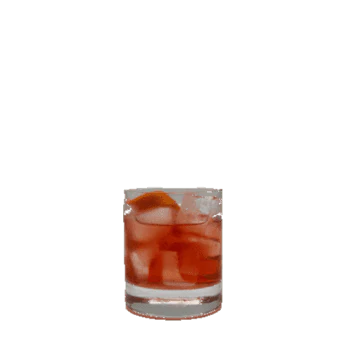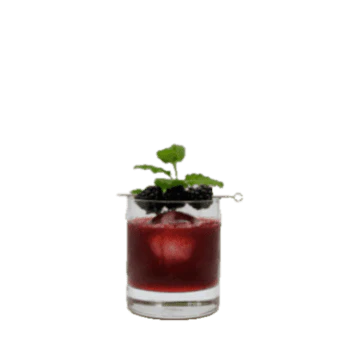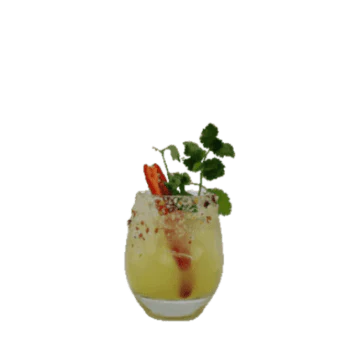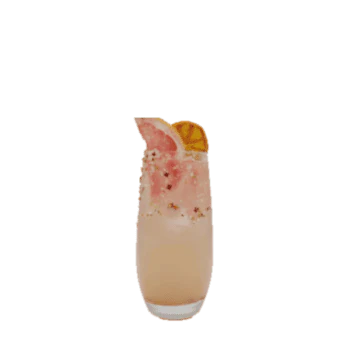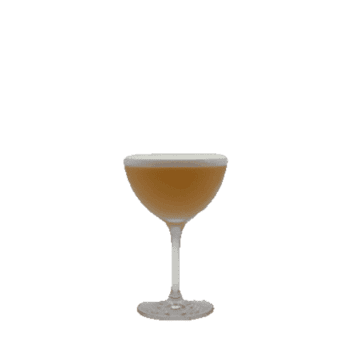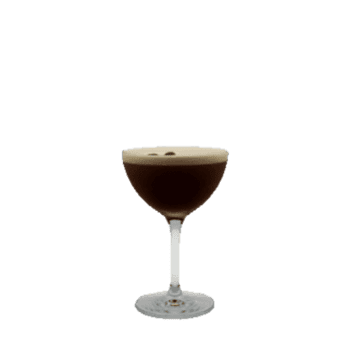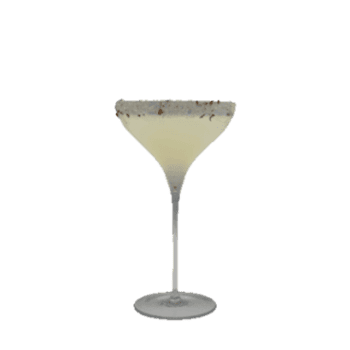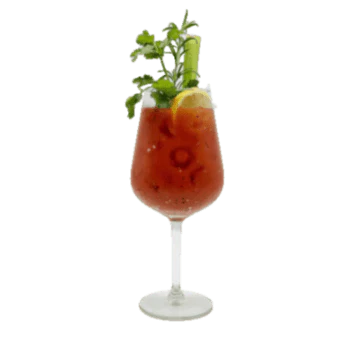The Mezcal Resource Centre
Learn more about Mezcal
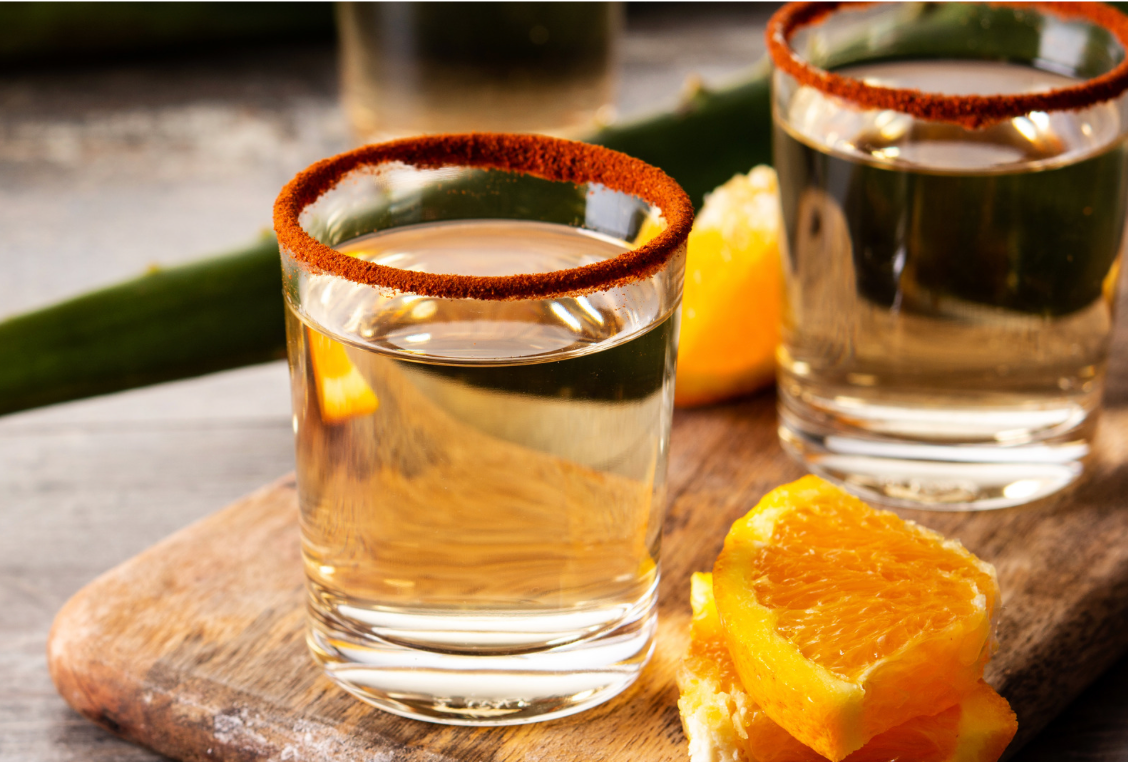
What is MEZCAL?
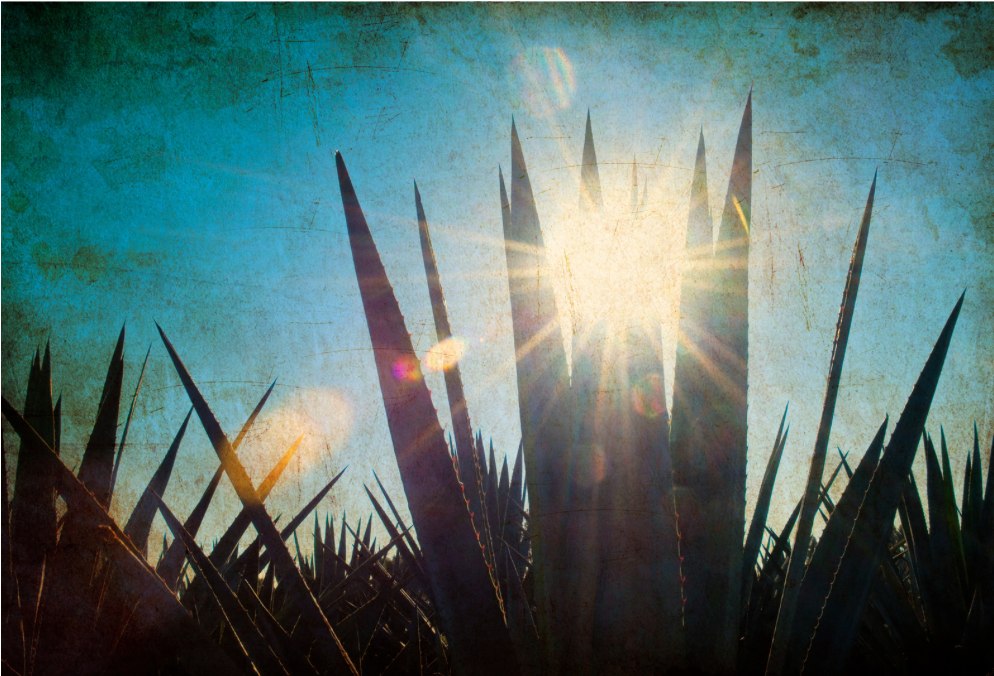
What is Agave?
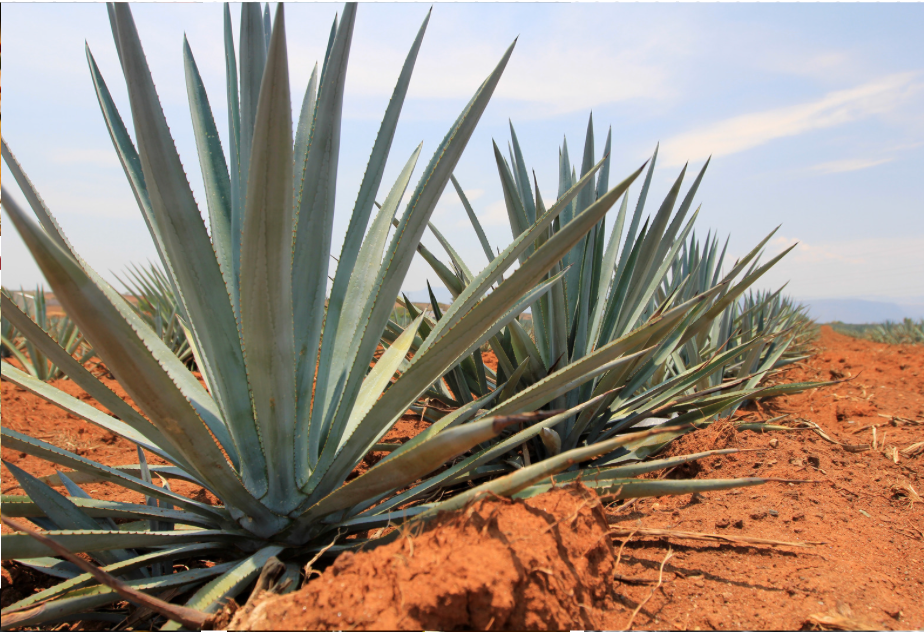
Agave Types?
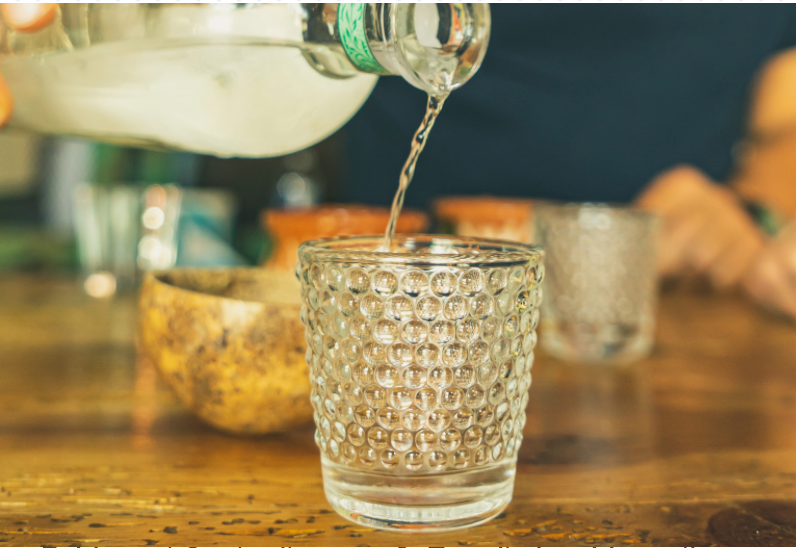
How to drink Mezcal
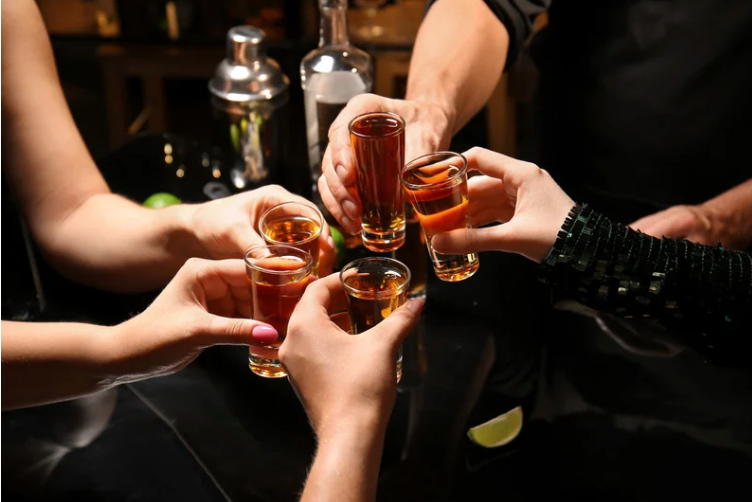
Sip DON’T Shoot!
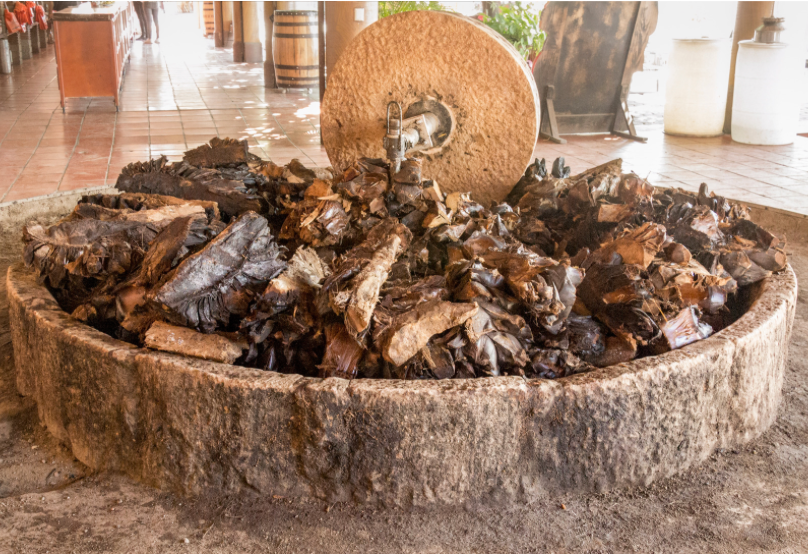
Mezcal Making Process
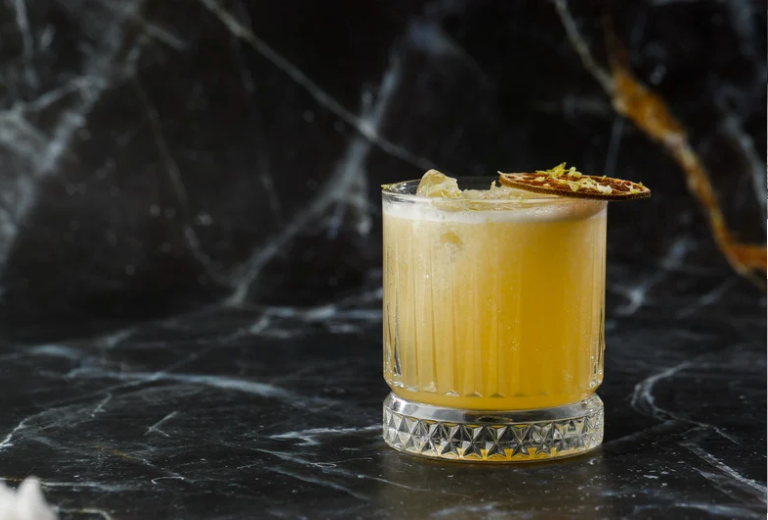
Mezcal Cocktails
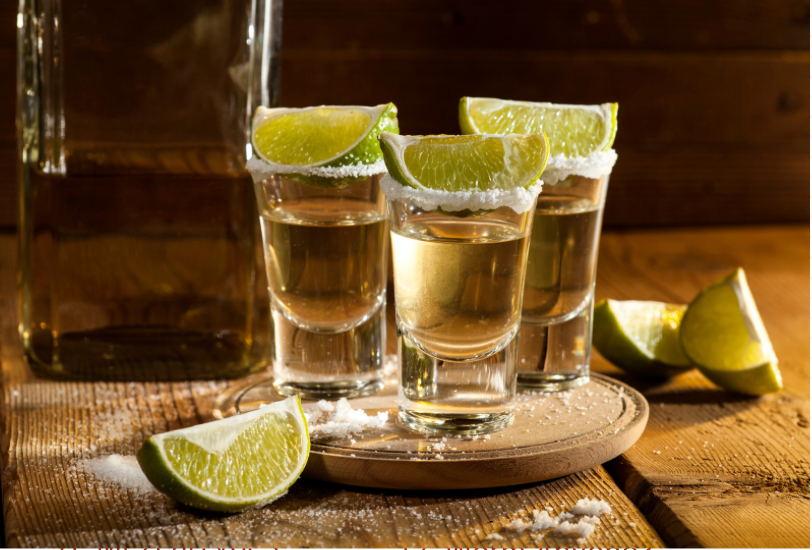
Tequila is a Mezcal!

To Smoke?
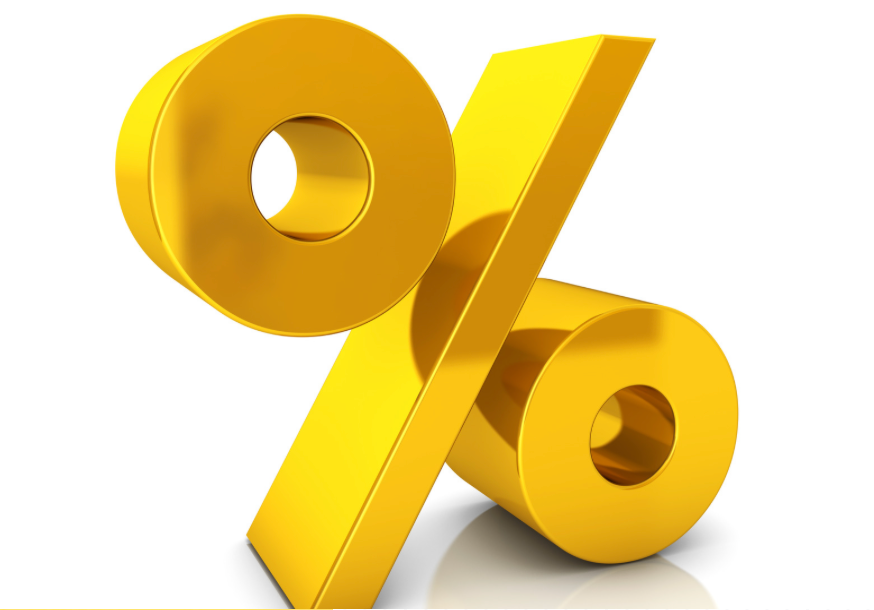
What Percentage?

Mezcal Types
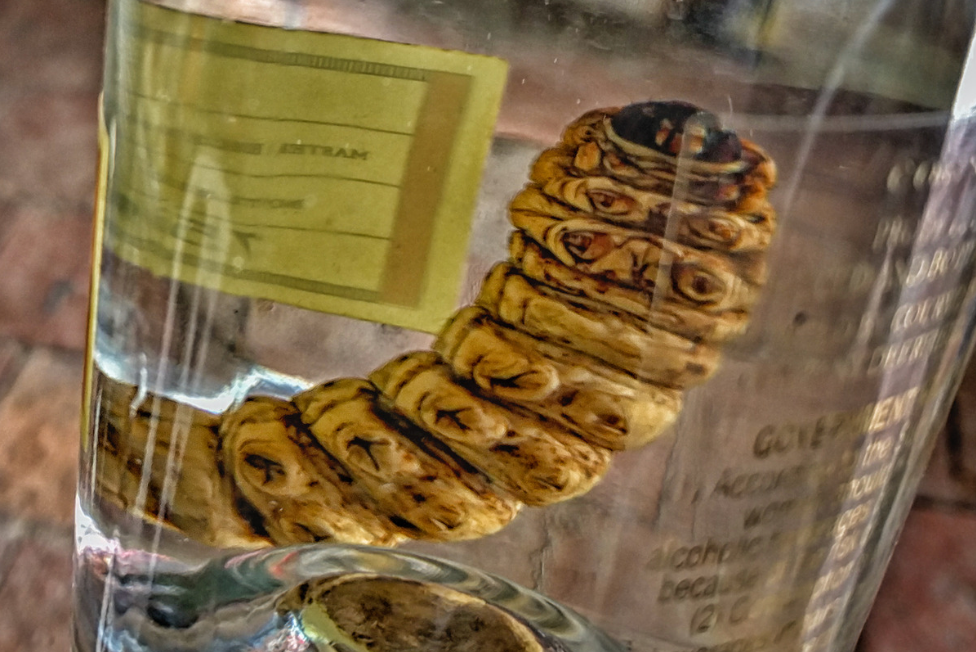
WORM Anyone?

Sustainability

Innovation

Rules & Regulations

LIVE Events
1. What is MEZCAL ?
Mezcal is one of the fastest growing distilled Alcoholic Spirits in the World.
Spelt Mezcal, you will also see it written as Mescal.
Mezcal is only made in Mexico, only a few states in Mexico can make Mezcal.
Mezcal is made from the Agave Plant, in Spanish called Maguey.
The word Mezcal comes from the Aztec language - Nahuatl words “metl” and “ixcalli”, which means “oven-cooked agave.
Traditionally the word ‘mezcal’ has been used generally in Mexico for all maguey (agave) spirits and it continues to be used for many maguey spirits whether these spirits have been legally certified as "mezcal" or not.
Mezcal is considered a drink of artisan origin.
For Mexicans, Mezcal is an important part of their cultural heritage and therefore it is very important for them to follow the traditional production methods that are passed from generation to generation.
Mezcal is the oldest distilled spirit in the Americas, dating back some 500 years.
2. What is AGAVE ?
Agave is what Mezcal is made from, it’s a plant that can vary in size, looks like a pineapple, but with longer leaves.
If you asked this question ‘What is Agave’ ten years ago, most people wouldn’t have known the answer.
However, the growing popularity of Mezcal, tequila and organic sweeteners have introduced many people to the agave plant.
Agave is pronounced Ah-Gah-Vay
Agave grows on multiple continents, but is most commonly found in Mexico,
While Agave thrives in the high altitudes and mineral-rich soils of the Mexican state of Jalisco, it’s also grown in many other areas of
Mexico.
However, the production of blue agave, used to make premium organic agave products, is concentrated in Jalisco region.
The Agave comes from the family of Asparagus, not the commonly thought Cactus!
Many species have strong fibrous tissue in their leaves, which makes them useful to make into ropes, brushes, sandals, nets, sleeping
mats, and other similar items.
The stalk of the Agave plant can be fermented and made into another traditional Mexican alcohol, called Pulque
The raw sap of most Agave species is considered toxic and requires cooking prior to ingestion.
3. Agave TYPES
Over 200 Species of Agave exist, although there are at least 30 species of Agave used to make Mezcal, we shall concentrate on the 10
most popular species used for Mezcal…
Note: 90% of all Mezcals are made from Espadin Agave
ESPADIN
Years to maturity: 4-5 years
The oldest of the varieties and also the most widely distributed. Light grey-green, long, straight, narrow and rigid leaves with small
spines. Characterized by its high sugar production. Its name varies depending on the region. Espadin means Swords, this describes the leave shape and length.
TOBALA
Years to maturity: 10-30 years
The Tobalá agave, scientifically known as Agave Potatorum. Tobalá agave is a smaller agave variety compared to others used in Mezcal production, It is highly prized for its complex and unique flavour profile. Due to its smaller size and slower growth, Tobalá Mezcal is often produced in smaller quantities by artisanal Mezcal producers. This results in a more limited and sought-after product. Some Tobalá agave plants grow in the wild, making them even more rare and sought after for their unique characteristics.
TEPEZTATE
Years to maturity: 25-30 years
The Tepeztate agave also known as Agave Marmorata. It is highly valued for its unique flavour profile. It is known for its striking appearance, with tall slender spiky leaves giving it an almost regal look. Due to the long growth cycle the Tepeztate is produced in smaller batches. This males the Tepeztate Mezcal relatively rare and sought after by enthusiasts.
ARROQUENO
Years to maturity: 12-18 years
Also known as gave americana var. oaxacensis. Arrroqueño agave is a larger agave species with robust, broad leaves. It typically has a more substantial appearance compared to some other agave varieties. Arrroqueño Mezcal is renowned for its intricate and varied flavour profile. While not as rare as some other agave varieties, Arrroqueño is still considered a specialty Mezcal. Arrroqueño Mezcal is appreciated for its complex and captivating taste, which combines fruity and herbal notes with a certain earthy character. It is often a choice for those seeking a unique and high-quality Mezcal experience.
TOBASICHE
Years to maturity: 12-15 years
Tobasiche agave is recognized by its unique appearance. It has long, slender stalks with narrow, spiky leaves. The plant has an elegant and almost otherworldly appearance. Mezcal made from Tobasiche agave is known for its intricate and multi-layered flavour profile. Due to its long growth cycle and specific characteristics, Tobaziche Mezcal is often produced in smaller, artisanal batches. Tobasiche agave is less common compared to agave varieties like Espadín, making Tobasiche Mezcal a somewhat rare and coveted choice among Mezcal aficionados.
COYOTE
Years to maturity: 7-12 years
Coyote agave, scientifically known as Agave americana var. oaxacensis. Coyote agave is a medium-sized agave with spiky, serrated leaves. It typically grows in a rosette form and can be recognized by its distinctive appearance. Like other agave varieties used in Mezcal production, Coyote agave Mezcal is often produced by traditional, artisanal methods. Coyote agave is not as rare as some other agave varieties, but it's still considered a specialty Mezcal. Coyote agave Mezcal is recognized for its well-balanced and versatile flavor profile. Its relatively shorter maturation period and moderate availability make it a choice for those seeking unique Mezcal experiences with a relatively quicker production cycle.
LUMBRE
Years to maturity: 7-12 years
Lumbre agave, scientifically known as Agave inaequidens. Lumbre agave is a medium-sized agave plant with long, spiky leaves. It has a distinctive appearance, often characterized by its striking red or reddish-brown spines. Mezcal made from Lumbre agave is known for its unique flavor profile, often characterized by herbal and earthy notes, along with a hint of smokiness. It may also have a touch of sweetness. Lumbre agave Mezcal is frequently produced using traditional, small-batch methods, making it a choice for those who appreciate artisanal Mezcals. Lumbre agave is not as common as some other agave varieties but is still more widely available than some of the rarer agave types. Lumbre agave Mezcal is appreciated for its distinct appearance and intriguing flavor, which combines herbal and smoky elements with a touch of sweetness. Its relatively faster maturation period and moderate availability make it a sought-after choice among Mezcal enthusiasts.
BARRIL
Years to maturity: 8-15 years
Barril agave, scientifically known as Agave karwinskii var. barril. Barril agave is a medium-sized agave with long, spiky leaves. It typically forms a rosette and is recognized by its distinctive appearance. Barril agave is not as common as the widely used Espadín agave but is more readily available compared to some rarer agave types. Barril agave Mezcal is appreciated for its balance and complexity. Its moderate maturation period and moderate availability make it a popular choice for those seeking Mezcals with a well-rounded flavor profile.
MADRECUISHE
Years to maturity: 10-18 years
Madrecuishe agave, scientifically known as Agave karwinskii var. maxima. Madrecuishe agave is a medium to large agave species with broad leaves. It typically has a robust and visually appealing appearance. Mezcal made from Madrecuishe agave is known for its complex and intriguing flavor profile. It can feature herbal and earthy notes, along with hints of smokiness, mineral qualities, and sometimes a touch of sweetness. Madrecuishe agave is not as common as some other agave varieties, such as Espadín, making it a specialty choice for Mezcal enthusiasts.
CUPREATA
Years to maturity: 7-12 years
Cupreata agave is a medium-sized agave with spiky, serrated leaves. It typically forms a rosette shape and is characterized by its distinctive appearance. Cupreata agave Mezcal is frequently produced using traditional, small-batch methods, similar to other agave varieties. Cupreata agave is a specialty in the Guerrero region of Mexico, and it's used to create unique and sought-after Mezcals, reflecting the region's terrain.
4. How to DRINK Mezcal
The 3 main ways…
1st STRAIGHT
Drink it neat at room Temperature, without mixing. Drink from a glass (ideally not a shot glass) or a traditional shallow clay container.
2nd COCKTAILS
Mezcal is the go to cocktail at the moment to mix into your cocktails, its distinct taste separates it from all other alcohol spirits. Check out our Cocktail Archive…
3rd ICE & WATER
Well this is gonna be controversial!
A Mezcal Connoisseur will Jump out of their seat if anyone suggested mixing Ice or water to their Mezcal.
But here’s our take on this….
If you’re willing to mix your Mezcal into a cocktail, which inevitably is going to include; a fruity liquid, bitters, salt etc, etc.
Then why not keep it simple with a dash of room temperature spring water?
And much like in the US and around the world where some like to mix an ice cube into their Whiskey, why not the same for a Mezcal?
Enjoy your mezcal as you wish!
Although to get the most out of the differing flavour profiles is to drink it slowly and neat at room temperature.
NOTES
Don’t keep your Mezcal chilled, drink at room temperature
Do have your Mezcal with food
Don’t Shoot, SIP
Maybe have your Mezcal with a slice of orange with chilli worm salt (or just the orange slice)
You may use any sliced citrus fruit to cleanse your palette between different varieties / expressions.
SMOKE – Choose a smoke profile that works for you, there are many Mezcal brands with varying profiles to suit.
HOW TO TRAIN YOUR PALATE
Take the tiniest sip you can possibly take and squeeze your tongue into the roof of your mouth and into the front of your teeth and the mezcal will go to the back of your tongue and over your palate and down the throat. Wait 30 seconds before taking another sip, and your palate will be awakened. After that sip typically the mezcal will be softer and sweeter. Once you’ve consumed mezcal three or four times, you won’t have to tune up your palate, because your brain will know what it’s expecting.
5. Sip DON’T Shoot
Tequila is often consumed as a shot. And since many correctly compare Tequila to Mezcal, Mezcal shots are also becoming more common.
Although Mezcal is supposed to be slowly sipped. One sip at a time.
Why Shouldn’t I Shoot ?
Although you can make your own choice on the matter, it’s important to be reminded that the agave plant has been growing for 4 years and above, then using mostly artisanal traditional methods, practically hand made from farm to bottle, it has arrived from Mexico to your glass.
So maybe Savour every Sip!
History of Shooting (A Frat Party Drink?)
There are many stories that exist to why shooting alcohol spirit has come about, here’s our take on it…
Shooting shots came about in the US after the end of 50s and 60s, a time when the next generation was far more interested in recreational drugs than the hard drinks of their parents’ generation.
By combining spirits with spirits & spirits with syrups then giving the results clever names, liquor companies were able to rebrand the experience, and general purpose of hard alcohol to keep up with the appeal of drugs.
Alcohol spirits basically became something to be masked with syrup, or shot down straight with lime and salt, and/or chased with equally uninspiring beer.
The importance wasn’t the taste, but the effect.
This Marketing marvel worked fabulously for the American students who were able able to drink at the age of 21, and is often the case this American trend then travelled World Wide!
6. Mezcal Making PROCESS
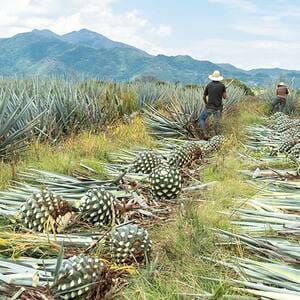
HARVESTING
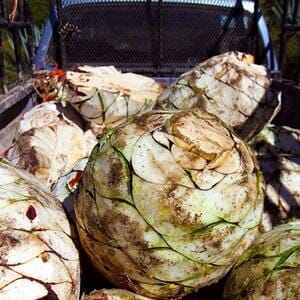
TRANSPORT
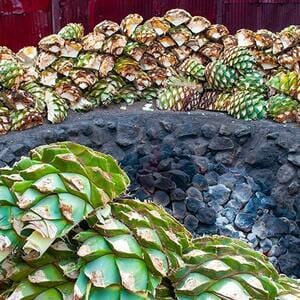
PREPARING PINAS
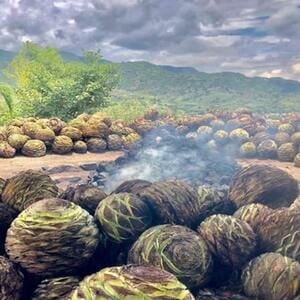
BAKED IN FIRE PIT
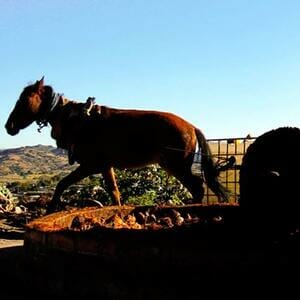
MULE DRAWN MILL
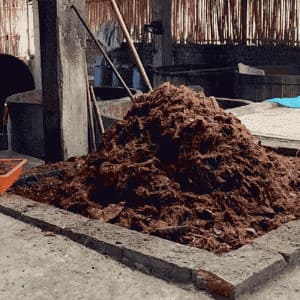
COLLECT AGAVE

DISTILLING PROCESS
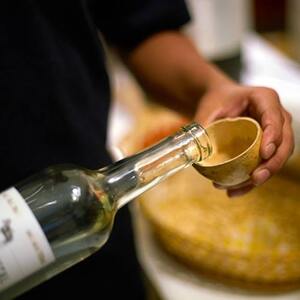
QUALITY TESTING
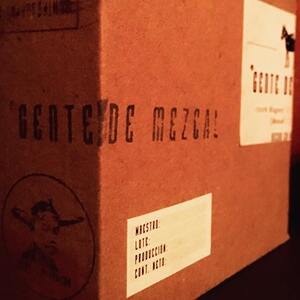
BOTTLE & BOX

SHIP
7. Mezcal COCKTAILS
Our 10 favourite Cocktails, and how to make them
8. TEQUILA is a Mezcal !
Mezcal is commonly referred to as tequila's smoky cousin.
However Not all mezcals are tequilas, but all tequilas are mezcals!
I know what you’re thinking, but it’s true!
Tequila is created from a unique kind of agave called Blue Weber agave.
Mezcal, however, may be manufactured from a variety of agave plants.
Tequila is typically produced by roasting the agave in industrial furnaces before distilling it 2-3 times in copper pots.
Mezcal on the other hand is distilled in clay pots after being heated in earthen pits lined with lava rocks and loaded with charcoal and wood (Mostly why Mezcal is called artisanal, or ancestral) .
Because of the pina’s (the part of the agave plant that that is left after the leaves are cut off, looks like a large Pineapple) cooking method, mezcal has a stronger taste than tequila.
Did you know, that…
Some tequilas are so silky and delicate that they can stand in for vodka in any drink. Not a Mezcal however!
As a mezcal is more distinct and is used in cocktails or as a substitute for a powerful spirit like whiskey.
9. To Smoke or NOT to Smoke ?
Starting questions for new Mezcal drinkers is…
Why is a Mezcal smoky?
or
What’s the difference between a Tequila and a Mezcal?
The answer In many ways can understood by simply tasting it next to tequila.
What differences will you find?
Most notably, you will find mezcal to be smoky by comparison. You may also come across Mezcals with flowery, fruity, or earthy scents.
Intense and smoky like a campfire to some,
or subtle and gentle to others.
The person who finds the smoke to be light is usually a scotch, bourbon or whiskey drinker, and is used to bold spirits.
If you find mezcal to be intensely smoky, there is a good chance you are not accustomed to drinking spirits neat.
Let us suggest a Cube of Ice, or in a Cocktail Perhaps?
Check out our Cocktail Glossary…
Mezcal gets its smoke from the way fresh agave is roasted to release the sugars that allow fermentation to take place, this cooking takes place in an earthen pit underneath.
DIFFERENT SMOKE PROFILES
Every Mezcal brand has varying Smoke content, so just because one mezcal tastes Smoky, it’s not necessary that the next will too.
Pick a a tasting profile that works for you and enjoy the Mezcal ride!
10. What PERCENTAGE ?
There are varying responses to:
What ALCOHOL PERCENTAGE should a Mezcal be?
Well…
The Governing body certifying each Mezcal brand requires the Alcohol volume of a Mezcal to be between 36% - 55%
The Connoisseurs however prefer the range 45% - 55%
WHAT PERCENTAGE OF AGAVE?
In years gone by, a Mezcal could be classed as a Mezcal if only 80% of the content was made from Agave (Maguey).
Now 100% must be made from agave
The governing authorities have defined Mezcal as:
‘Mexican alcoholic beverage, 100% maguey, obtained by means of the distillation of juices fermented with Mexican yeasts, whether spontaneous or cultivated, and juices that have been extracted from the mature cooked heads of magueys harvested within the territory included in the Denomination of Origin, Mezcal.’
The 5% rule
To ensure a future of creativity a Mezcal can be flavoured with additives of up to 5% of volume including;
Insects, fruits, herbs, honey, colouring agents (strange, but true!), and meat (yes Meat! Pechuga for example), among others.
11. Standard, Artisanal, or Ancestral ?
The dictionary definition for Artisanal is:
Something made in a traditional way by someone who is skilled with their hands
Mezcal is permitted to be made using 3 possible methods…
STANDARD ARTISANAL ANCESTRAL
STANDARD MEZCAL (a.k.a. The INDUSTRIAL Method)
The bare minimum for an Agave spirit to be certified as a Mezcal.
This method permits the use of some specific modern tools and equipment that accelerate the Mezcal making process.
The standard method doesn’t really give us authentic Mezcal, but it’s more efficient and thus facilitates industrial-scale production.
MEZCAL ARTISINAL
This method brings us back to tradition, it prohibits most of the newer tools and techniques that industrial production allows, though shredders for milling and stainless steel tanks for fermentation are two exceptions.
Artisanal Mezcal is probably the all-around best choice for selecting a Mezcal; it achieves high standards of authenticity and quality without the steep price premium of ancestral-certified Mezcals.
Go to section: Making Mezcal to Learn more…
MEZCAL ANCESTRAL
Ancestral Mezcal follows the strictest rules, and of course, this will always be reflected in its pricing.
There often isn’t that much of a difference between a good quality artisanal Mezcal and a regular ancestral Mezcal. The differences are that ancestral Mezcal only permits pit ovens, prohibits shredders, and requires the use of maguey fibres. However, the majority of artisanal Mezcals still use pit ovens rather than elevated ovens, still choose mills or mallets rather than shredders, and still opt to include the maguey fibres.
12. WORM Anyone?
You may have heard the stories of the Worm being a Must in a Mezcal or Tequila?
Well its NOT true!
One reason for this is that in the 1950s, a mezcal manufacturer discovered larvae in a batch of his alcohol and felt the insect enhanced the flavour. As a Super successful marketing gimmick, he began putting "worms" in all of his bottles. Tourists loved it, soon after, other mezcal producers followed suit.
NOTE: The best mezcals Don’t have Worms
WORM FACTS
The Worm is not a Worm at all it’s the Larva of a Moth, and the Moths love agave plants.
A worm can be eaten, and No you don’t hallucinate when you eat it
Does eating a Worm prove you’re Macho? Depends on your company
Worm Salt, is often used to dust fresh orange slices to accompany mezcal in Mexican bars and homes.
Worm salt is like ‘an explosion of salty, spicy flavour’, which experts say helps to bring out the earthy notes of the mezcal.
The salt can span the gamut from a little spicy to seriously hot, depending on the recipe used.
13. Sustainability
With the rise in Popularity of Mezcal, there has been a significant emphasis of how to Make the whole Mezcal making process Sustainable
The conscious Brands are typically preserving the culture of the artisan families that handcraft and protecting its traditional methods of production, including the social sustainability of the villages
The emphasis has also shifted to the environmental sustainability of the land they live and work on, and the agronomic sustainability of the plant and the land it grows in.
Stopping de-forestation, to grow more agave crop, and increasing bio-diversity as well as the upcycling of by‐products and the use of organic cultivation. is key for the future.
This growth of Mezcal is something very serious to consider in the context of the growing involvement of multinational spirits companies in the category. According to Jorge Vera, president of the Cluster of Mezcal Oaxaca, a group of brands working to promote and protect the category, these represent more than 75% of the production and marketing of the category.
14. Innovations
Mezcal is evolving to meet the needs of the global consumer, You may be asking, How so? Well lets delve deeper…
PECHUGA
Pechuga starts with Mezcal that has already been double distilled. Espadin is usually the choice, but there are some mezcaleros that make Pechuga with other agave varieties.
Before the third distillation the mezcalero places the Mezcal in the still and adds seasonal wild fruits such as apples, plums, plantains, bananas, and pineapples, as well as spices and rice and anything else that the mezcalero prefers in their recipe.
Next, a whole raw chicken breast, turkey breast, or piece of venison is delicately suspended in the atmosphere of the still. The third distillation begins and the Mezcal vapor passes over the meat and condenses into a clear liquid that has an amazing taste and smoothness. (And yes! This is a true process!)
COFFEE MEZCAL
Whilst in Mexico, you will find some that mix Mezcal and Coffee together, some with sugar, some without. Some brave brands have embraced this and begun marketing this for us to try
FRUIT MEZCAL
Whilst mezcal pairs very well with food and raw fruit alike. Some brands have embraced the second distilling process to include with a fruit, from mangoes, pineapples to orange, etc…
CANNABIS MEZCAL
With the Laws relaxing in the US for cannabis based products, some have embraced this with Mezcal, although not available commercially, it won’t be long before it is, at least in the US, us in the UK will have to wait a bit longer for this. Maybe a CBD version will get here first?
15. Mezcal REGULATIONS
Over the years there has been increased government regulations as to the production of Mezcal.
Currently mezcal can be legally produced in only 9 out of the 31 Mexican states, and must be certified by the Consejo Regulador del Mezcal (CRM).
While DO (Denomination of Origin) status has been a net positive for many mezcaleros, hundreds of traditional producers fall outside the DO and are legally prohibited from calling their mezcal by its name.
The states in the DO are Oaxaca, Guerrero, Puebla, Michoacán, Tamaulipas, Guanajuato, Zacatecas, Durango, and San Luís Potosí.
Does your Mezcal have the official Hologram? Then your mezcal is registered as an Official Mezcal!
The Mezcaleros from the other regions outside of the 9, simply call their Mezcals, Agave Spirit.
Certified mezcal is defined and classified by a Norma Oficial Mexicana (NOM) on mezcal.
As per the NOM and tradition alike, all mezcal must be 100% agave/maguey – no other sugar source may be added during the fermentation process
The NOM establishes three categories of mezcal, which are broken down further into six classes.
CATEGORIES
Mezcal (Standard or Industrial) / Artisanal Mezcal / Ancestral Mezcal
CLASSES
Blanco/Joven - Unaged and Unadulterated, the vast majority of mezcals fall into this category
Madurado en Vidrio – ‘Matured in glass’ – mezcal stored in glass for over twelve months, underground or somewhere with minimal variation in light, temperature, and humidity. Storing in glass (especially buried underground) is a traditional practice that softens the mezcal over time, without lowering the alcohol content.
Reposado - Mezcal “rested” in a wood vessel of any type or size, for between two and 12 months.
Anejo - Mezcal aged in any type of wooden vessel of less than 1000 liters for more than a year.
Abocado - Flavored or infused mezcal. The NOM specifically permits maguey “worms,” damiana, lime, orange, mango, and honey. Other fruits, herbs, and caramel are also common additions.
Destilado con - “Distilled with” – otherwise known as mezcales de pechuga. In this traditional process, a second or third distillation is done with other ingredients in the still itself. These may include regional fruits, meat, herbs, etc.
16. LIVE Mezcal Events
There are many more live mezcal tasting events in the UK nowadays, but if you are looking for an exceptional live tasting look no further than the sister of the brand owner of Gente de Mezcal. Her name is Erika, Brighton based, she holds regular events in Brighton and London.
You may contact her direct on: Erika@gentedemezcal.com


